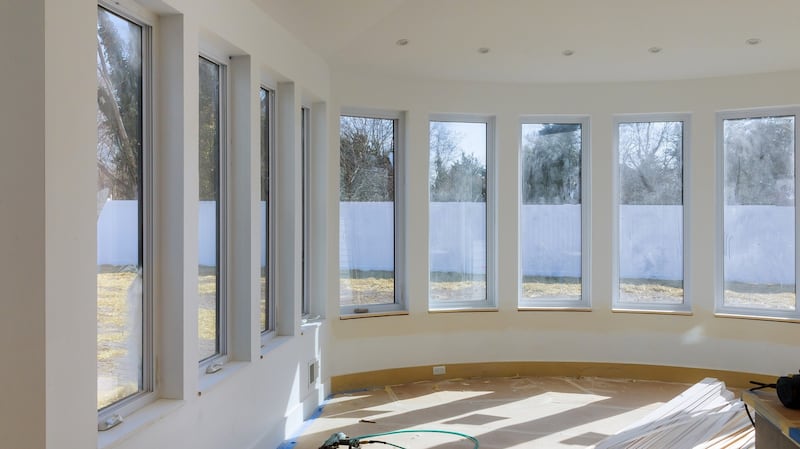With successive lockdowns bringing the comfort of our homes sharply into focus a key element is ensuring they are warm and free from draughts. It’s no surprise then that top of many 2021 refurb wishlists is new windows. Choosing windows can be an overwhelming task once faced with the range of styles, materials, colours and features available. Windows are also one of the largest outlays in any renovation and prices will vary greatly depending on your choice. There are few rules of thumb you can follow to ensure the right choice.
Get the right advice
Make sure you take the time to test out different products. "A visit to the showroom is a must as it gives people a much better sense of what the products look like and how they work," says Owen Power of Senator windows, adding that people often find something they might have liked in a catalogue looks very different in reality. "We often find during the consultation in the showroom people change their minds as they find out there is a better solution or a more cost-effective option for their home."
Be upfront with the salesperson about your needs and budget. They will have a wealth of knowledge you can tap into. The more information you can share with them, the better they will be able to tailor the specification to suit your requirements.

Ask the salesperson about hardware options available – there is usually a range of styles and finishes to choose from. Investigate how the locking mechanisms work as it’s essential you are happy with how the system feels in your hand and are comfortable using it. The more time you put into the design and the specification, the better the result will be. That means seeking the right advice.
Specification
"There are four measures you need to be aware of when purchasing windows," says Power. The first is U-value, which indicates the amount of heat loss through the window. "You want the U-Value to be as low as possible," he says. A good U-Value would be 1.2 for double glazing and 1.0 for triple glazed windows.
The next measure is the G-value. This is the measure of solar gain through the glass, a good G-Value would be .64, and a bad G-Value would be .3.
The L-value relates to air leakage, and finally, there is the acoustic value of the glass, which refers to the reduction of sound travelling through the window.
Windows are made to order, so each one is made specifically for your home. “We’ve made over a million windows and none of them have been the same, from different sizes to types of handle, glass and openings, every window is different,” says Power.
The specification will depend on many factors. From the kind of project you are doing to the orientation and location of your home. Customers typically fall into one of three categories, says Power. Replacement, extension or new build. Each will have very different needs.
When designing the window’s specification, the window supplier needs to understand the building materials used in your home, how it’s insulated, and what heating system is installed. “Your windows are part of the overall fabric of the building and it’s important to put all of these things together to make sure you create the best build environment you can get,” says Power.
Glass
"Glass technology has come on in leaps and bounds in the last 10 years," says Power. There are a large number of options when it comes to the right choice of glass. Speak to your window supplier about your needs so they can advise on the most suitable glazing options available.

For south-facing aspects, for example, where glare and sun damage might be a concern, several glass options are available to minimise overheating and reduce glare. There are also solutions such as laminated glass to block UV light. This will help to prevent sun damage and fading to floor finishes, upholstery and artworks. You can also opt for glass with noise control. If you live on a busy road and noise is an issue you might want to consider acoustic glazing, which will reduce noise as it passes through the window.
Lead times
All windows are on a lead time, typically between four and 12 weeks, depending on the product you choose and where the windows are manufactured. So it would be best if you familiarise yourself with the lead times as early in the process as you can. If you are extending or building a home, understanding how long things take to be delivered will help avoid any delays, which can be stressful and costly. And if you are replacing your windows, you will be able to coordinate any other trades you might need, such as painters, accordingly.
“We fabricate our windows in Wexford, which gives us control over quality and lead times,” says Power. Lead time from ordering to installation can vary then depending on whether standard, non-standard or dual colours are required.















